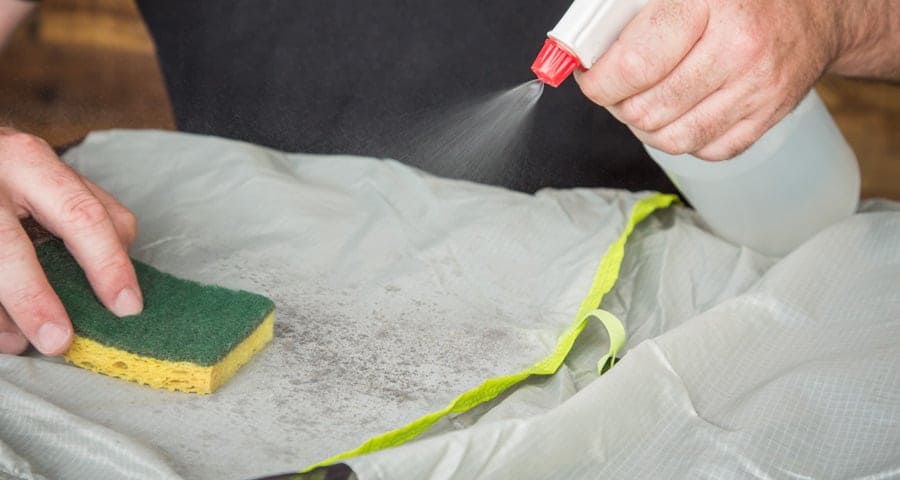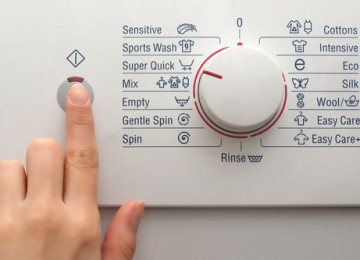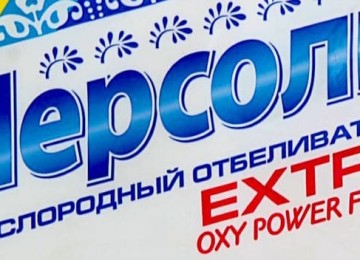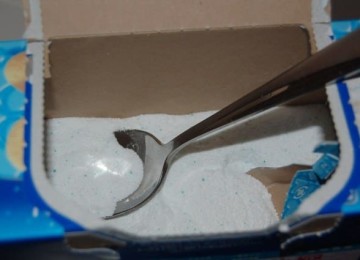 Camping equipment, including a tent, is expensive. Every owner wants to use the awning for as long as possible. But no matter how carefully tourists treat their forest dwelling, natural conditions and unforeseen circumstances leave traces in the form of dirt, streaks, and stains. In addition, unpleasant odors and mold appear. Living in such a house, even temporarily, is inconvenient. Sooner or later the problem of washing the awning arises. Whether a tent can be washed in a washing machine is a controversial issue.
Camping equipment, including a tent, is expensive. Every owner wants to use the awning for as long as possible. But no matter how carefully tourists treat their forest dwelling, natural conditions and unforeseen circumstances leave traces in the form of dirt, streaks, and stains. In addition, unpleasant odors and mold appear. Living in such a house, even temporarily, is inconvenient. Sooner or later the problem of washing the awning arises. Whether a tent can be washed in a washing machine is a controversial issue.
Types of materials for awnings
To solve the problem washing possibilities collapsible tent, you need to understand the features of the materials from which it is made. About ten years ago, all tents (military, for travelers) were canvas.
Today's tents are multi-layered. The outer part of the awnings is made of dense, moisture-impregnated materials, the inner layers are made of breathable (membrane) materials that are no less durable.
The material of today's tents is of better quality than tarpaulin, impregnated from moisture and dirt, but it still needs care.
Today's tents are made from fabrics containing special fibers:
- UV-resistant, polyester. Strong, do not stretch when wet. The manufacturer uses high-quality materials (for example, lavsan) inside and out.
- Less resistant polyamide fabrics (nylon, nylon). Deformed by water and ultraviolet radiation.These materials are used to decorate the tent from the inside (walls and floor).
- When making tents, more than one type of fabric is used (mixed), but always with cotton fibers. They are also used for interior decoration.
To add strength, manufacturers use the latest technologies:
- weaving, which increases the strength of the material;
- adding thick synthetic threads that prevent the fabric from unraveling;
- They are treated with a special impregnation to prevent getting wet, which is important for raincoat tents.

How to clean a tent
Being inside a dirty and foul-smelling tent is unpleasant and unhealthy, especially for people prone to allergies. How to wash a tent if manufacturers do not recommend washing, especially in automatic washing mashine?
They claim that the material loses its properties due to mechanical stress: from dense it becomes loose and can tear. The protective layer against getting wet will be erased, and the tent will not protect against rain. Perhaps this will happen with low-quality products.
More expensive awnings can and should still be washed. Obviously, hand washing is difficult since the tent is large and heavy.

Machine wash
Experienced travelers say that a good tent can withstand one or two washes in a washing machine, but caution is a good idea.
- The loading volume into an automatic machine must be not less than 6 kg, otherwise the awning won't fit. If you push it in with force, the washing result will be no good, and the tent may come apart at the seams. You need to make sure that the tent will fit freely in washing machine drum.
- Set the water temperature to no more than 30°C. If it is too hot, the impregnating film will be destroyed.
- Ordinary washing powder
- is not suitable for the awning, since the active substances will destroy the fabric fibers. Non-aggressive baby detergents, capsules with detergent will do. You can wet the tent, soap particularly dirty places with laundry soap. Load it into the machine and do not add any more detergents. Wash the tent on a gentle program. Choose
- a delicate wash mode
or hand wash. Both are washed carefully, without wringing. Wringing is not allowed.
- Then carefully remove the awning from the drum, lay it out to drain the water. Hang it up to dry. If the tent is dried outside, it is desirable that the place be shaded. The canopy will dry quickly from the bright sun, because of which it will lose its shape (wrinkle). After thorough drying, the awning is rolled up and put away in a cover.
- The damaged protective layer is restored with special sprays. Experienced hikers recommend impregnations:
- Mcnett Tentsure;
Nikwax;
Waterproffing spray.
Other impregnations are of high quality, also expensive, but not so economical to use. The choice of sprays for restoring protection from rain is large.
It is necessary to remember that washing the tent should not become the norm. It is not beneficial, especially in a washing machine. Tourists, together with manufacturers, believe that washing is required for very heavy dirt, in extreme cases. Hand washSet the water temperature to no higher than 30°C. If it is hot, the impregnating film will be destroyed.Ordinary
washing powder
- not suitable for awnings, since the active substances will destroy the fibers of the fabric. Non-aggressive baby laundry detergents and capsules with detergent are suitable. You can wet the tent and soap particularly dirty areas with laundry soap. Load it into the machine and do not add any more detergent.
- Wash the tent using a gentle program. Choose
- delicate wash cycle
- or manual. Both of them are washed carefully, without spinning. Spinning is not allowed.
Then the awning is carefully removed from the drum and laid out to drain the water. Hang to dry. If the tent is drying outside, it is advisable that the place be shaded. The bright sun will dry out the canopy quickly, causing it to lose its shape (shrink).
After thorough drying, the awning is rolled up and put into a cover.

Mcnett Tentsure;
Nikwax;
Waterproffing spray. (1:10)Nikwax impregnation is recognized as one of the best. It is applied to damaged areas of fabric with a sponge soaked in the product or with a spray. Use with caution as the spray is flammable. The product is expensive, but a half-liter container lasts a long time. Other impregnations are of high quality, also expensive, but not as economical to use. There is a large selection of sprays to restore protection from rain.It must be remembered that washing a tent should not become the norm. It doesn't do any good, especially in the washing machine. Tourists, together with manufacturers, believe that washing is required for very heavy soiling, in extreme cases.
Handwash
If you can’t do without washing, but you don’t want to take risks by entrusting the cleaning
- washing machine
- , wash by hand.
- At home, this is done in the bathroom or shower.
- The bath is filled with water no higher than 30°C. They place a canopy there.
- Wash dirty areas with soap. Or throw a bar of soap into water to create a soapy solution.
Use a soft sponge to wipe dirty areas effortlessly. It is permissible to smooth the material with your hands, squeezing slightly.









